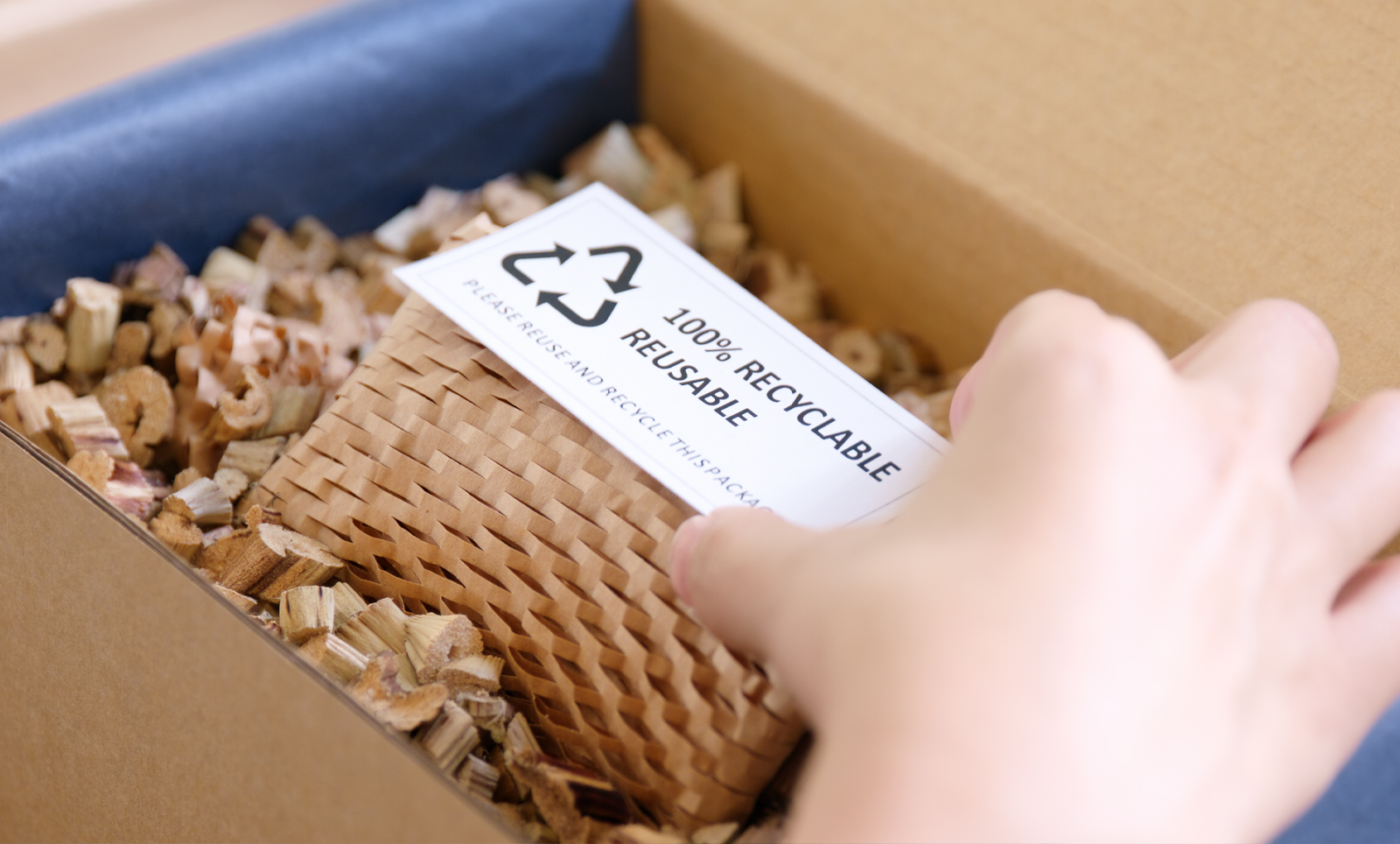In a time when environmental awareness influences consumer decisions and business strategies, the packaging sector finds itself at a critical turning point. Packaging, often a silent contributor to environmental degradation, can lead towards sustainability. Embracing materials that are kind to our planet is not just a corporate responsibility; it’s a global call to action.
Defining Sustainable Materials & Custom Packaging
The term ‘sustainable materials’ describes substances whose sourcing, production, and disposal have negligible impact on the environment. Typically derived from renewable resources, these materials boast the advantage of being either biodegradable or suitable for recycling.
Custom packaging is a bespoke storage approach crafted to address the unique requirements of various products and brands, thereby elevating the consumer experience. Integrating sustainable materials into custom packaging represents a significant evolution, marking a decisive move towards eco-friendly practices in packaging design.
Even so, embracing sustainable materials is not merely about using ‘green’ resources. It encompasses a broader approach that includes efficient manufacturing processes, reduced waste, and a lifecycle perspective that considers the end-of-life of the packaging materials. As brands increasingly seek to resonate with environmentally conscious consumers, the emphasis on sustainable materials in custom packaging becomes not just a trend but a necessity for business.
Using Sustainable Materials In Custom Packaging
Incorporating sustainable materials into custom packaging involves a meticulous selection process. The criteria extend beyond the environmental benefits of the materials to include functionality, aesthetic appeal, and cost-effectiveness. Let’s explore some of the most prevalent sustainable materials shaping the future of custom packaging.
Post-Consumer Recycled Materials
Post-consumer recycled (PCR) materials are the unsung heroes in the realm of sustainable packaging. Sourced from used products that consumers have discarded, these materials are reprocessed and transformed into something new and practical. Using PCR materials in packaging is a testament to the circular economy concept, where waste is not an end product but a new beginning. Packaging made from PCR materials reduces landfill waste and conserves resources and energy, forging a path towards a more sustainable future.
Recycled Paper Pulp
Recycling paper waste, like old newspapers, office sheets, and cardboard, gives rise to recycled paper pulp, a vital component in eco-friendly packaging. This versatile and durable material, crafted from recycled sources, presents an excellent option for various products. Choosing recycled paper pulp allows companies to significantly reduce their environmental impact. It helps minimize carbon emissions, save trees, and promote a greener, healthier earth.
Kraft Paper
Kraft paper stands out for its simplicity and robustness. Made from wood pulp, it is renowned for its strength and durability. What sets kraft paper apart is its minimal processing, which maintains the paper’s natural strength and results in less environmental impact compared to other paper types. Moreover, its rustic, natural appearance appeals to eco-conscious consumers and sends a strong message about a brand’s commitment to sustainability.
Compostable Materials
The use of compostable materials in packaging is a forward-thinking approach to sustainability. These materials break down into natural elements in a compost environment, leaving no toxicity in the soil. This remarkable trait makes them an excellent choice for reducing packaging waste. From plant-based plastics to biodegradable films, compostable materials represent a leap towards a future where packaging leaves no trace behind, aligning perfectly with the principles of a sustainable ecosystem.
Utilizing sustainable materials for custom packaging requires innovative design and engineering approaches. Custom packaging solutions now often employ 3D modeling and eco-friendly printing technologies to optimize the use of materials and minimize waste. This shift reflects a commitment to sustainability and aligns with the evolving regulatory landscape that increasingly favors environmentally sound packaging solutions.
Benefits of Using Sustainable Materials in Custom Packaging
The advantages of incorporating eco-friendly materials in custom packaging are diverse. Ecologically, these materials contribute to lowering carbon emissions and conserving finite resources. For businesses, opting for eco-friendly packaging can elevate their brand reputation, strengthen consumer trust, and may even pave the way for access to new markets. Moreover, using such materials often results in long-term financial benefits due to more effective resource utilization and decreased waste.
The move towards sustainable materials in custom packaging also aligns with global environmental goals and regulatory requirements. Hence, companies adopting these practices are future-proofing their business and contributing to a movement of ecological responsibility.
The Bottom Line
Advancing toward a greener future in packaging is not just a response to consumer demand; it’s a crucial part of our shared commitment to protect the Earth. The use of eco-conscious materials in custom packaging marks a significant progression towards this goal. With ongoing innovation and adoption of these green alternatives, we’re improving not just the attractiveness and practicality of our products but also contributing to a more sustainable, healthier world for the coming generations.
.




